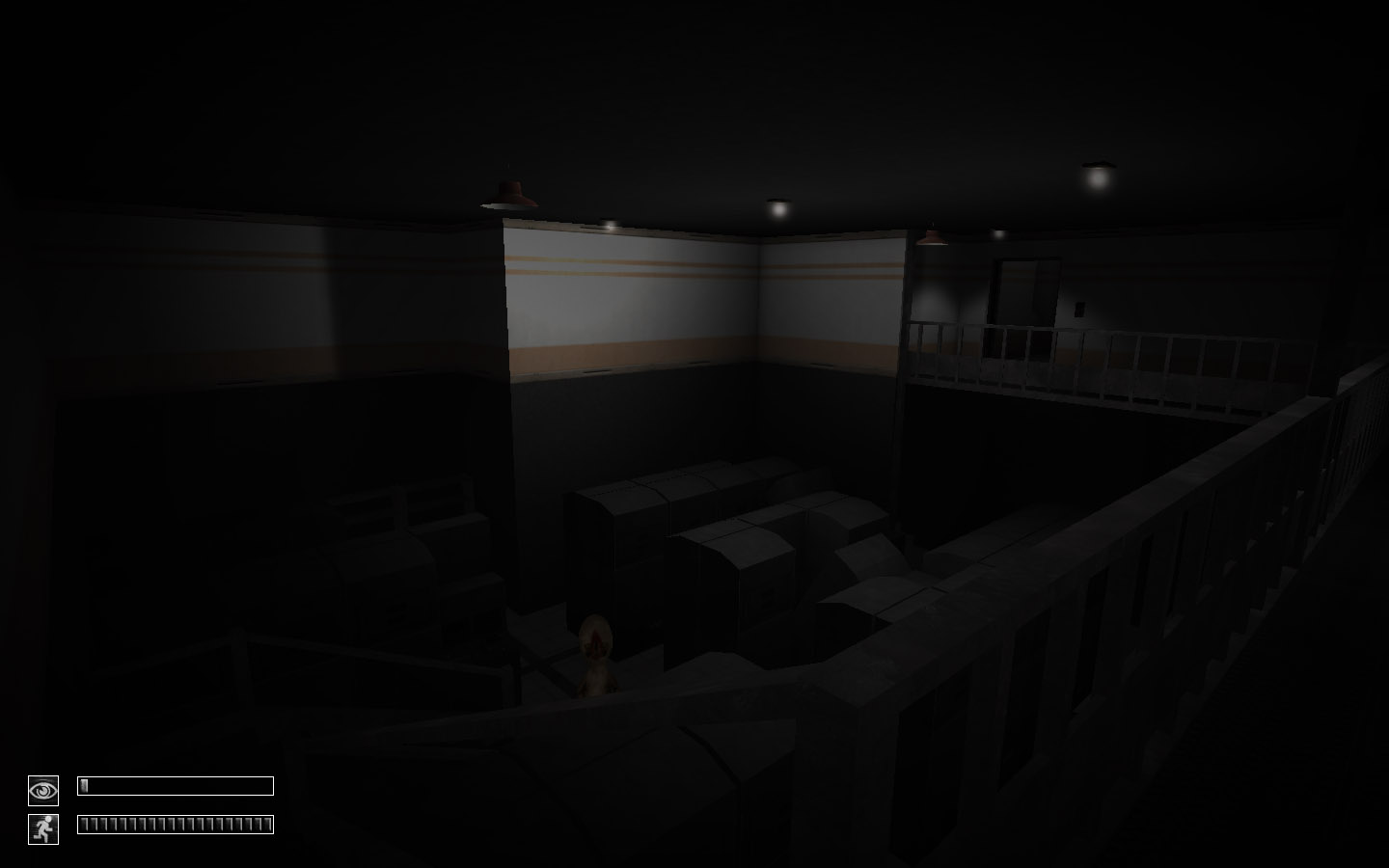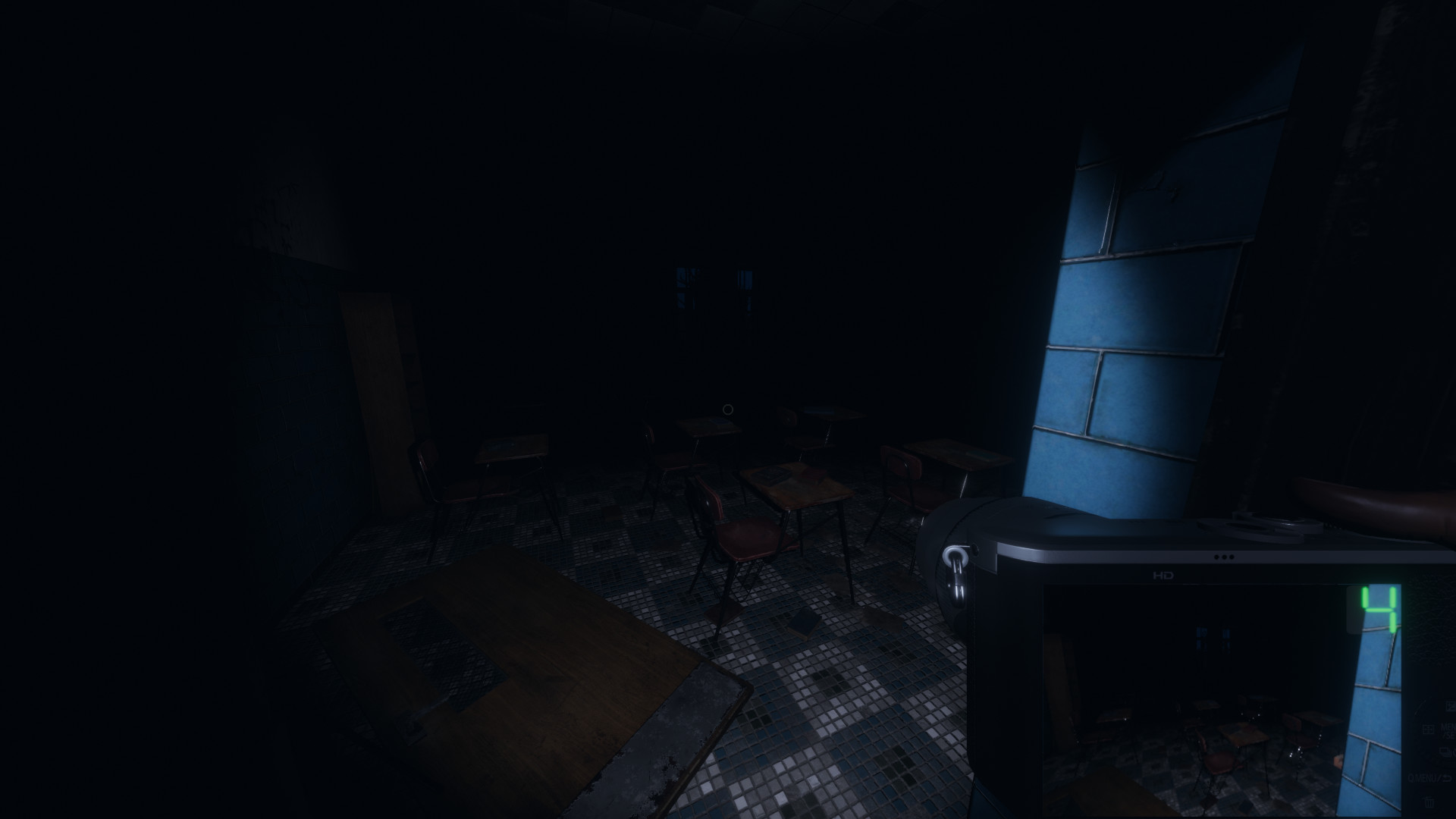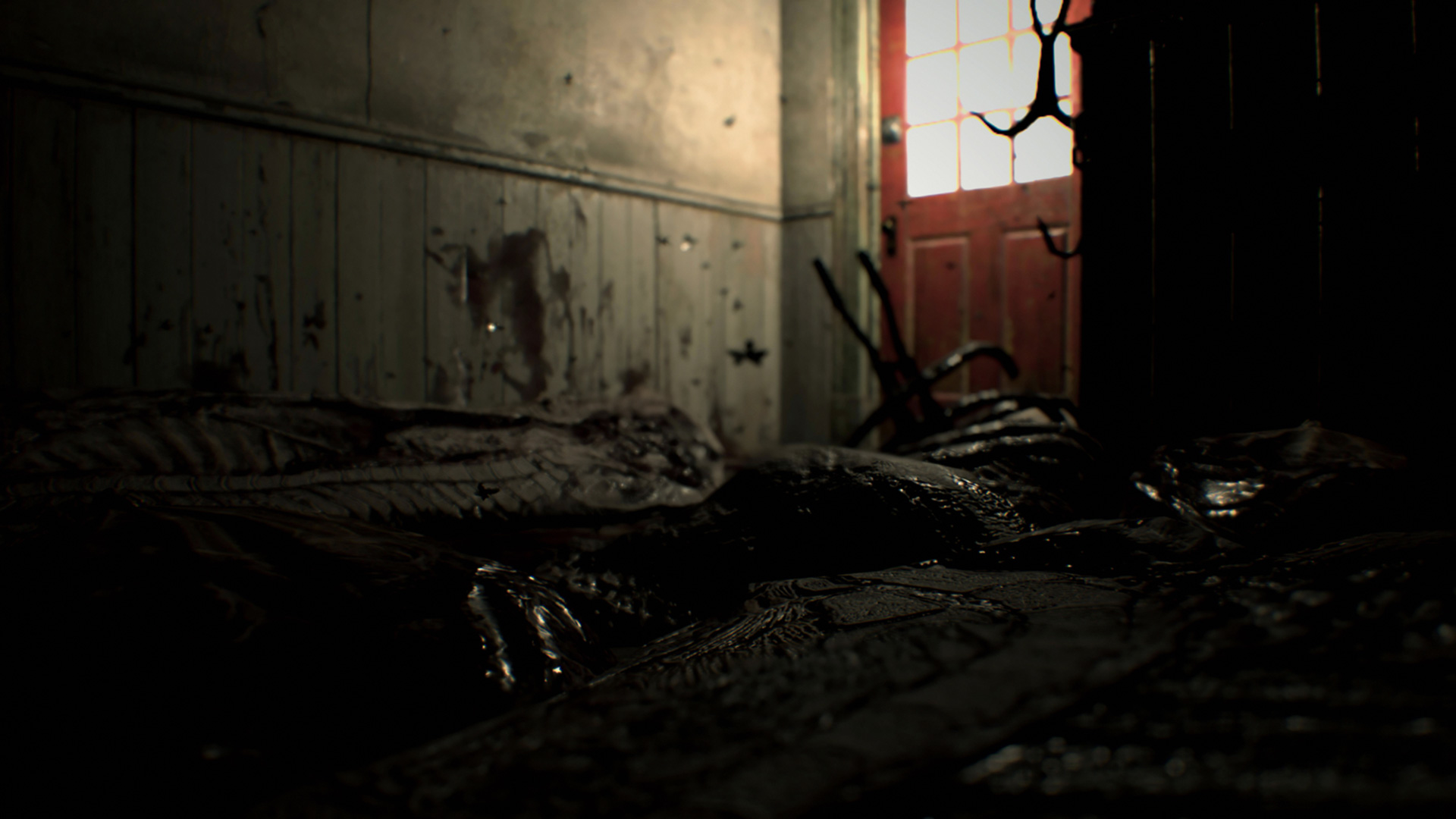Horror games offer a level of terror no other medium can match — here’s how they do it
Horror is wonderful, but what makes games different?

The best horror games thrust the player into a constant state of dread, elevating the tension by introducing new monsters and setpieces. But how, exactly, do they accomplish this? And what elements make a horror game genuinely scary in ways that other mediums are not?
Horror games have a lot in common, with one of the more obvious ideas revolving around the utilization of darkness to instill uncertainty and fear of the unknown in the player. Memorable creature designs are equally expected, whether they be spooky ghost children, the iconic Xenomorph, or a big white dude patrolling a farmhouse. Eerie music and panicked sound design can be more than enough to spook a player, especially if they’re carefully patrolling every hallway in anticipation of a jumpscare.
But there’s more to a horror game than just darkness, monsters and sound design. Games offer the unique opportunity to weave terror into interactivity. Other forms of horror, whether films or books, cannot put the user in control of the protagonist. Ultimately, the viewer or reader is passively watching the main character’s struggle against horrors of the unknown. Regardless of how potent the terror is, it’s not the consumer’s struggle.
With video games, the participant is given control of the protagonist. Resident Evil VII isn’t just Ethan Winter’s struggle against the sinister Baker Family, it’s also the player’s strife. Sometimes, an exact protagonist is intentionally omitted to focus on the player’s experience rather than that of a specific character. Because games are designed around the player’s control, terrifying mechanics are vital for a potent horror game.
Unpredictability
Interactivity is ineffective when every moment is scripted, and the game is less organic as a result. If the player walks down a hallway and the monster is programmed to always appear at the end, then the player’s input does not matter, especially if that’s the only path forward. That jump scare will probably still be effective, but that horror is akin to what non-interactive mediums could accomplish. If the player gets the sensation that whatever is hunting them cannot be thwarted or changed based on their actions, then they might as well be watching a film.

The most impactful horror is malleable, making players fear the behavior of a monster (or a series of them) rather than scenes programmed by a developer. SCP: Containment Breach places the player deep within a facility populated by roaming monsters who boast their own behavior patterns. Once the player finishes the introduction, they must find their way out of a randomly generated complex as a creature that only moves when not in view hunts them. As the player proceeds, monsters with new patterns of behavior are introduced. Knowing these creatures aren’t scripted, and instead openly roam this facility, makes them terrifying. You always know they could appear at any moment — not because the developers decided they should.
Consequences
Monsters aren’t scary just because they look grotesque. That’s certainly part of it, but it’s also because they threaten something valuable to you. Encountering a monster in reality means your life's on the line. If something isn’t at risk, then most of that terror vanishes. That creature is still scary to look at, but if it can’t get you, the fear is limited to perception.
Sign up to receive The Snapshot, a free special dispatch from Laptop Mag, in your inbox.

But this can’t be accomplished through media. You’re not actually risking your life when facing off against Mr. X in Resident Evil 2. It’s just a video game, but there are many ways developers can put something on the line to elevate the suspense and make you fear in-game death. This is most commonly achieved through the loss of progress.
If you’ve just spent 15 minutes collecting items, progressing through the areas and solving little puzzles, then the Xenomorph dropping from an air vent in Alien: Isolation isn’t just a scary sight. Now, the player is risking loss of progress, and as a result, they’d suffer from wasted time. Wasting time is genuinely frustrating, so when a scary monster threatens to impede your progress, you’ll want to avoid dying at their hands (claws/fangs/tentacles) as much as possible. Now, the Xenomorph’s scary visage is in combination with the fear of losing something tangible.

Loss of progress isn’t the only way to instill fear in the player. Developers can put something at risk that cannot be regained, and if it can, it might be a pain in the butt to do so. Demon’s Souls isn’t a horror game, but it’s a great example. World Tendency means that every death further plunges the game’s world into darkness. As a result, certain events will change and enemies can get harder. When a player dies, they’re not only risking losing souls, but each failure exacerbates the difficulty of the journey.
Pacing
Keeping players in a constant state of dread is different than repeatedly throwing something scary at the player. Knowing when to hold back is important when instilling fear. If the player is overwhelmed with scary things at all times, they won’t have the opportunity to freak themselves out and be terrified even when nothing is happening.

This atmosphere is equally, if not more, important than the scary thing itself. Fear of the unknown is why darkness is so unsettling. Lacking the knowledge of what’s happening in a specific room, or where the creature is located, is an impactful preamble to the frightening thing itself. It forces your brain to make assumptions and constantly second guess, especially when coupled with ominous sound design.
Pacing is also impactful when the scary entity is built up throughout a game’s runtime. In Phasmophobia, players know that the earlier points of a ghost hunt are when they’re safest. But they’re never entirely sure when it’ll become unsafe. If Phasmophobia allowed the ghost to start hunting as soon as the player entered the building, then some of the tension would be lost. It’s most impactful when the player is filled with uncertain dread wondering when the ghost could appear, as they usually only hunt when a player’s sanity is low enough.
Respite
Impactful horror isn’t just about keeping us in a state of fear. It’s also an incredible opportunity to offset that tension with the sensation of relief. Constant tension is great, but the inclusion of safety areas can program players to exhibit certain habits that benefit that tension. If that safety room can be accessed in certain sections of a game, it’s always a goal in the player’s mind to make progress and return there when they feel it’s necessary.

Resident Evil’s safe rooms are a great way to reset tension. Not only does it feel good to escape the roaming nightmares, but if a player is always presented with scary things, they will begin to harden and more easily resist the terror. Safe rooms put the player’s fate in their hands. These little nuggets of the world exist away from the strife, which means the player decides when to leap back out into the unknown. Leaving a safe room is an alarming prospect, as player’s want nothing more than to be cradled in the arms of safety forever. Not only does this offer a new type of played-guided tension, but it also keeps the player from being overwhelmed.
Resources
Horror is often coupled with dwindling resources. A zombie infestation is a lot less scary if you have an unending supply of food and water to comfortably live out the rest of your days in a bunker. So much horror revolves around forcing the protagonists to leave a place of comfort in an attempt to gather something. Whether this is ammo, electricity, gas, or some other vital component, it’s important to utilize resources carefully in whatever conflict is involved.

Video games are no different. Resident Evil would not be terrifying if the player had an infinite supply of grenade launcher ammo to blow every zombie to bits. What’s great about this genre of horror is that it asks the player to decide when they should use their limited ammunition and when they should just run. This is also a great way to reward the player for exploration, as solving an intricate puzzle to get a few shotgun rounds would probably be considered an awful prize in any other genre. But when those rounds could mean the difference between life and death at any turn, they’re the most valuable resource in the world.
Bottom line
Video games have the unique opportunity to present horror in a way that no other medium can. This genre can bring the most sought after emotions of thrills and excitement to players willing to invest themselves in them. Watching a horror film can be scary, but being hunted in a truly immersive game is far different than seeing a character get hunted.

When you’re in control, a new wave of anxiety will overcome you. You have to decide when to turn that dark corner, whereas films or books have those moments set in stone. At most, you can decide to pause the movie or stop reading, but with games, you’re an active participant and you need to make decisions in high-stress situations.
The best horror games utilize the medium to its advantage, channeling terror into the gameplay itself. Eerie sounds and appalling monsters are more than enough to scare someone, but when those elements are interwoven with intense mechanics, the developers can haunt players throughout the game’s entire runtime, even when nothing is happening.

Self-described art critic and unabashedly pretentious, Claire finds joy in impassioned ramblings about her closeness to video games. She has a bachelor’s degree in Journalism & Media Studies from Brooklyn College and five years of experience in entertainment journalism. Claire is a stalwart defender of the importance found in subjectivity and spends most days overwhelmed with excitement for the past, present and future of gaming. When she isn't writing or playing Dark Souls, she can be found eating chicken fettuccine alfredo and watching anime.
